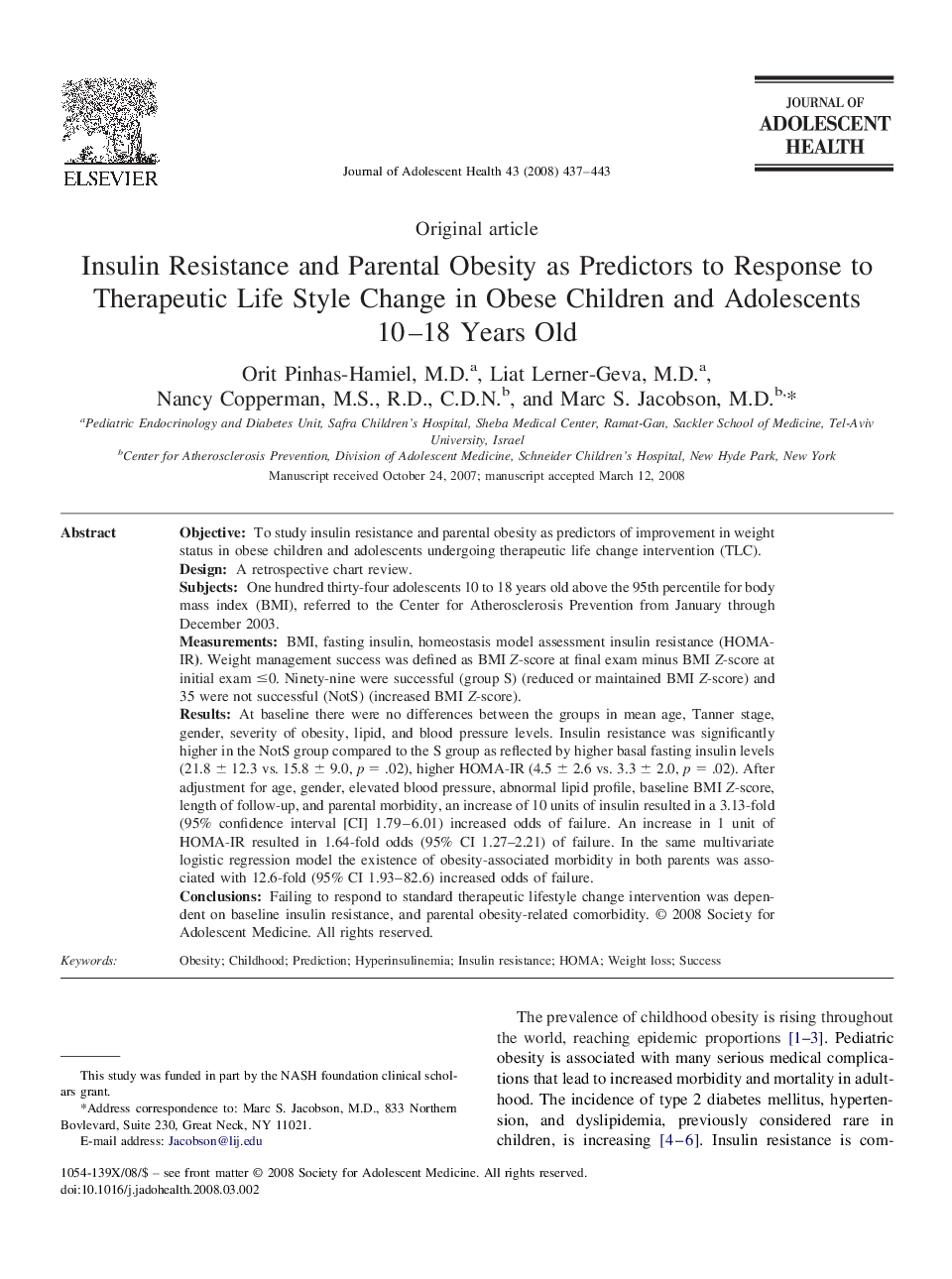| کد مقاله | کد نشریه | سال انتشار | مقاله انگلیسی | نسخه تمام متن |
|---|---|---|---|---|
| 1079716 | 950515 | 2008 | 7 صفحه PDF | دانلود رایگان |

ObjectiveTo study insulin resistance and parental obesity as predictors of improvement in weight status in obese children and adolescents undergoing therapeutic life change intervention (TLC).DesignA retrospective chart review.SubjectsOne hundred thirty-four adolescents 10 to 18 years old above the 95th percentile for body mass index (BMI), referred to the Center for Atherosclerosis Prevention from January through December 2003.MeasurementsBMI, fasting insulin, homeostasis model assessment insulin resistance (HOMA-IR). Weight management success was defined as BMI Z-score at final exam minus BMI Z-score at initial exam ≤0. Ninety-nine were successful (group S) (reduced or maintained BMI Z-score) and 35 were not successful (NotS) (increased BMI Z-score).ResultsAt baseline there were no differences between the groups in mean age, Tanner stage, gender, severity of obesity, lipid, and blood pressure levels. Insulin resistance was significantly higher in the NotS group compared to the S group as reflected by higher basal fasting insulin levels (21.8 ± 12.3 vs. 15.8 ± 9.0, p = .02), higher HOMA-IR (4.5 ± 2.6 vs. 3.3 ± 2.0, p = .02). After adjustment for age, gender, elevated blood pressure, abnormal lipid profile, baseline BMI Z-score, length of follow-up, and parental morbidity, an increase of 10 units of insulin resulted in a 3.13-fold (95% confidence interval [CI] 1.79–6.01) increased odds of failure. An increase in 1 unit of HOMA-IR resulted in 1.64-fold odds (95% CI 1.27–2.21) of failure. In the same multivariate logistic regression model the existence of obesity-associated morbidity in both parents was associated with 12.6-fold (95% CI 1.93–82.6) increased odds of failure.ConclusionsFailing to respond to standard therapeutic lifestyle change intervention was dependent on baseline insulin resistance, and parental obesity-related comorbidity.
Journal: Journal of Adolescent Health - Volume 43, Issue 5, November 2008, Pages 437–443